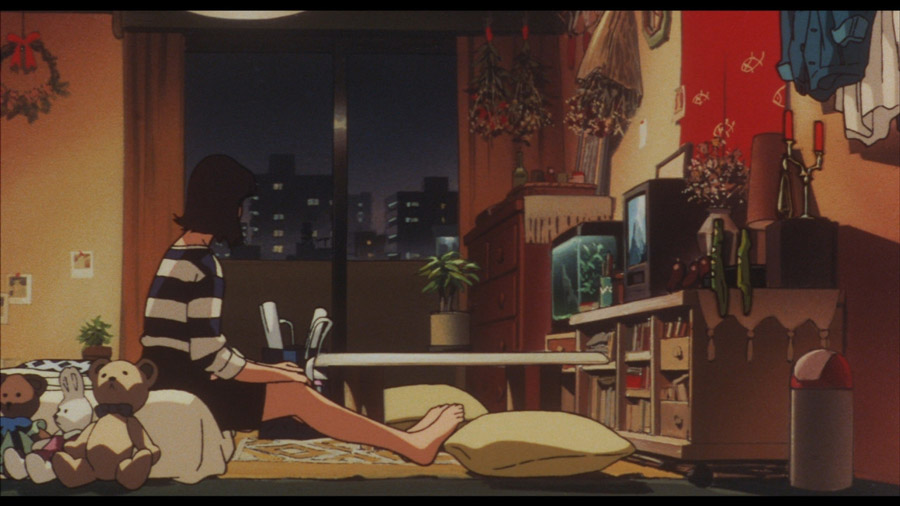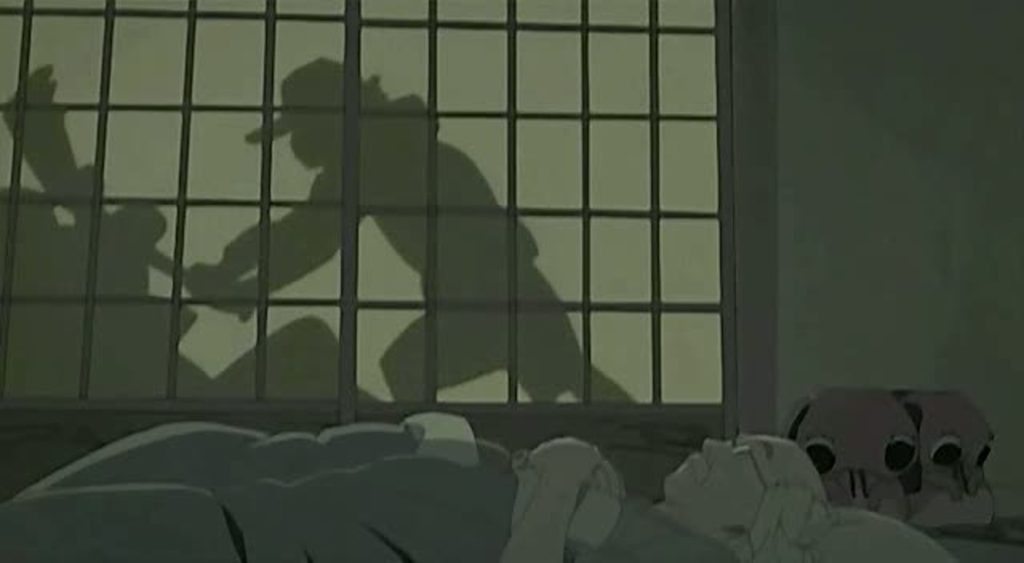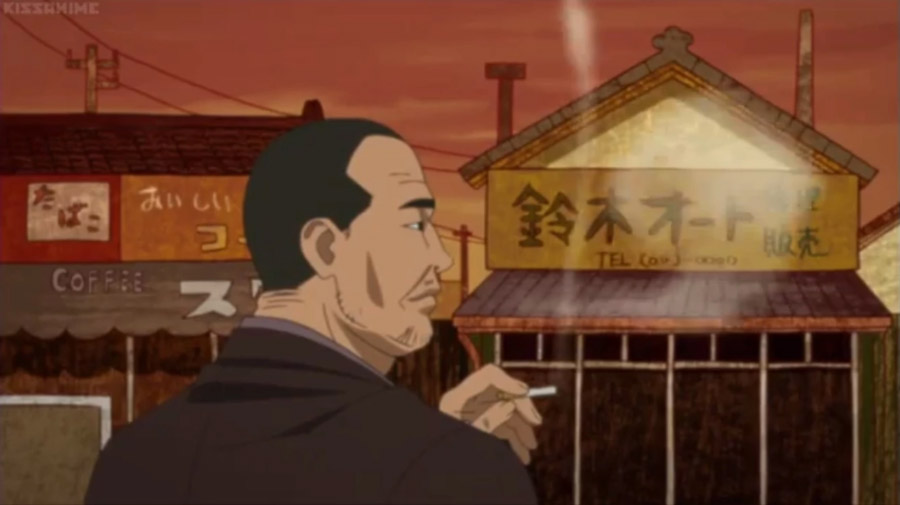From thriller film Paprika to comedy Tokyo Godfathers, Satoshi Kon was well-known as an outstanding Japanese film director and animator. Many of Satoshi Kon’s films are stand out pieces that play with perceptions, confusing both the protagonist and the audience watching them.
Are those scenes reality or imagination? This is the question that Kon’s works tend to provoke. Thus, an integral driving force of his films and series often revolve around the amount of control that the characters can have over their own surroundings.
Aside from this, Kon’s work is recognized by even academic populations in Japan as a critique of prominent social issues in the country. In Rōjin Z, the topics of aging and digitalization are discussed, while consumerism and otaku culture are central in Perfect Blue and Paranoia Agents. Tokyo Godfathers follow the perspective of social outcasts, highlighting the hierarchical nature of society, and Perfect Blue seems to be a critique of the Japanese idol industry and the effects of the male gaze on these idols. Yet when asked about the latter issue, Kon actually denies having any intention to criticize.
Nevertheless, it is undeniable that Kon is portraying Tokyo in his films — this much is explicit. He creates realistic renderings of the worlds his characters move in, often in recognizable places in Japan. As an animator, he had the freedom to depart from the real world and create entirely new settings. Hence, despite his denial of the matter, we will discuss Satoshi Kon’s use of landscape and how it ties back to the issues that his works seem to tackle.
Landscape as a critical element
Landscape on Reel
When it was first created, the film was hailed as being able to capture an authentic image of the world — capturing nature and man as they really are. During those times, landscape was nothing more than a realistic portrayal of our surroundings. Yet in the decades that had passed since its creation, the divide between landscape in “real” versus “reel” became more and more evident. It almost seemed like the landscape itself was an actor, driving action and motivation.
Aitken and Dixon (2006) have attempted to categorize the roles of the landscape into three: landscape as a medium, landscape as a work of society, and landscape as “doing work” on the characters.
Landscape as a Medium
Landscape can be used as a way to portray a character’s internal feelings externally. As film is a visual experience, filmmakers must find creative ways to depict the inner thoughts of the protagonists. Landscape is often used for this purpose — empty spaces to depict loneliness or messy spaces to depict internal conflict. Indeed, the bedroom of a character can serve as a clue as to what type of person they are.
Landscape as a Work of Society
Landscape can also be a manifestation of the values of society and its people — their dreams, desires, and the injustices that they have to face in everyday life. This is evident in dystopian films, where societies are commonly divided into hierarchical castes, highlighting the inequality that the lower class has to struggle with.
For example, in Suzanne Collins’ Hunger Games, the “Districts” are divided according to material production, with some items being more valued than others. Hence, the coal miners of District 12 lived visibly poorer lives than the manufacturers of luxury items in District 1.
Landscape Shaping Characters
Lastly, landscapes in the film may also become social agents, driving change in society itself. It can also be seen as a critique of how certain environments can influence society itself. For example, in Fritz Lang’s Metropolis, society is segregated between the upper class and lower class, with the two living in vastly different conditions. When Freder somehow makes his way out of the beautiful gardens of the upper class and into the industrial city of the lower class, he witnesses an explosion that kills several workers. This “work” of the environment prompted Freder to take a moral stand and fight class inequality.
Landscape in Satoshi Kon Films
Aside from the acting role of landscapes itself, it is also key to understanding the ways landscapes are portrayed. In particular, camera angles and movement can define the way a landscape is perceived. Upward or downward angles can indicate power structures. Wide shots common in Western films usually point to some sort of moral standpoint, while close-ups can help viewers understand the characters’ emotions better.
This is even more pronounced in animation, where creators are free to portray landscapes in even the most unrealistic manner, conveying their message as they see fit. Now, let us discuss landscape as exemplified by Satoshi Kon’s work.
Warning, spoilers ahead!
Perfect Blue follows Mima, a pop idol who is hoping to retire from the music industry to pursue acting instead. However, after she announces her decision to the public, she starts receiving death threats from a stalker, and the people surrounding her get attacked or murdered. Meanwhile, her acting job takes an unexpected turn as she has to act in almost pornographic scenes to further her career.
This blurs Mima’s perception of reality and dream — between home and the shooting set — as she becomes more and more introverted and insecure as an actress. This is worsened by her hallucinations of an alter ego — Mima in her girl band costume claiming she is the “real Mima”. In the end, her friend Rumi is revealed to be the stalker, and they engage in a surreal chase scene that takes them through the urban landscapes of Tokyo.

Going back to the beginning, Perfect Blue opens on a theme park stage. There are entertainment stands all around, as people move through the park looking at the various attractions and products offered.
On the stage, there is a group of anime heroes performing for an expressionless crowd of teenagers. From this, it is already evident that Kon is poking fun at Japan’s consumerist society. This is a central theme in Perfect Blue, as Mima is not only a part of a consumerist society but is actually a product herself. As she gets on the stage, we get a series of cuts that juxtapose her life on stage and her life at home.

At home, Mima has created a very intimate space for herself. The landscape of her one-room apartment is portrayed in such a way that we become more familiar with her sense of self and character. Contrarily, Mima’s workspaces are largely impersonal — big concert stages, a bustling film studio, and an advertisement-lined street that she treks to get home.
However, as the story moved forward and Mima began to lose her sense of reality, these spaces also began to blur into each other — Mima wakes up from a dream about the office in her home, and vice versa.

Work and home can be seen as a portrayal of Mima’s public image and her true self, respectively. Hence, when these two spaces became indistinct, Mima also began to lose her sense of self. In this case, Mima’s apartment was not just a “medium” to portray her emotions, but also a reflection of how she was able to define her individuality in the middle of a conformist, consumerist society.
On the other hand, her work spaces represent not only her public image but also the society that continues to quantify and measure her for consumption. As such, when these two landscapes merged and blurred together, Mima also felt the consumption of her own identity.
Tokyo Godfathers: Landscape as a Depiction of Social Hierarchies
Tokyo Godfathers takes on a comedic route while still tackling the issue of hierarchies in society. The film follows three homeless outcasts — former drag queen Hana, teenage runaway Miyuki, and middle-aged alcoholic Gin. The story begins when they find a baby abandoned amongst the garbage, and decide to look for the parents themselves to ask why they left behind the child. They name her Kiyoko, and go on a journey across the various levels of Tokyo to find her parents — from their makeshift home in the park, to the crowded streets of a Latin-immigrant area, and even to a luxurious mansion.
Their journey takes them to meet Sachiko, who claims to be Kiyoko’s mother but turns out to be the one who stole the baby from the hospital. It turns out, that it was her husband Yasao who left Kiyoko in a trash heap. Ultimately, despite the many things that stood in their way, the trio were able to find Kiyoko’s real parents.

Early on in the film, we see a critical contrast — the camera pans down from the top of the Tokyo Metropolitan Government building before finally focusing on the plastic and cardboard shack that the trio has built for themselves in the middle of a cold and snowy park below.
This is a persistent theme when it comes to the portrayal of landscape in Tokyo Godfathers: as the protagonists wander through the city, they are often dominated by tall and non-descript buildings. Their lack of space on the screen may also signify their lack of rights in the city — a reminder that they are a tiny and significant speck in this urban landscape.
Paranoia Agents: Landscape as a Space for Trauma and Escape
Last but not least, the series Paranoia Agents presents a much more abstract protagonist and antagonist. The cast is the whole of Tokyo itself, and the antagonist is an allegedly young delinquent with a baseball bat and roller blades, Shōnen batto (literally a young boy with a bat).

The story begins with Tsukiko, a graphic designer facing immense pressure to create a character as popular as her previous one. On her way home one day, she is assaulted by Shōnen batto. Chief detective Ikari and his assistant interrogate her, but the crimes do not stop there. Soon, more and more people are being attacked by Shōnen batto, yet Ikari is not getting any closer to finding him.

However, a noticeable commonality across all the victims is that because of Shōnen batto’s attacks, they were able to avoid some form of pressure or responsibility. Ikari is fired from his job, but soon finds out that Shōnen batto is actually just a made-up figure created by Tokyo’s collective imagination.
When people found out about Tsukiko’s assault, they began faking their own to avoid their responsibilities. This collective fear of responsibility finally manifests itself in the form of a dark liquid which Ikari and his assistant fights, restoring Tokyo to its normal state.

When Ikari gets fired, he begins to realize that he no longer knows Tokyo. He is unfamiliar with the city he lives in. Thus, after meeting an old friend of sorts, Ikari enters a fantasy world — one he is more familiar with. Small shops and restaurants line the street instead of tall office buildings. When he hears a cry for help, he runs after the burglar to try and catch him. By nature, Ikari’s line of work is brutal — he has to remain emotionally uninvolved despite the many disturbing events that he has to encounter every day.
Furthermore, as his position became higher, the difficulty of the cases he worked on also increased. So much so that he expresses to his friend how much he missed working on simple burglary cases. As such, escaping to his fantasy world was his way of escaping the cold and technological city that’s slowly leaving him behind. His fantasy world is much more intimate than the real world, perhaps one wherein he can stop and talk with street vendors and shopkeepers — something no longer possible on the busy streets of Tokyo.

In the end, after defeating the dark liquid, Tokyo returns to how it was. Not the intimate world of Ikari’s fantasies, but the busy, crowded, people moving fast as the traffic is moving slow. An ironic end, as nothing changed at all.
With all that said, we can then conclude that Kon’s depiction of landscapes truly makes for great actors. Referring to Aitken and Dixon’s categorization of the role of landscapes once again, we find that Kon’s works portray all three.
As a “medium”, the merging of Mima’s work and home spaces also signified her internal conflict as she lost her sense of self. As a “work of society”, we see that the towering buildings in Tokyo Godfathers highlight the inequalities that Tokyo’s lower-class experiences. Lastly, all of these landscapes created by society “work” on these characters, creating traumatic experiences for even normal men like Ikari.
By connecting society’s traumas to the landscapes and settings in which the people live, Kon effectively puts the responsibility of that trauma on society as a whole. Despite his denial of his intentions, we can still say that Kon has exposed the collective trauma which Japan has had to bear for so long.















































